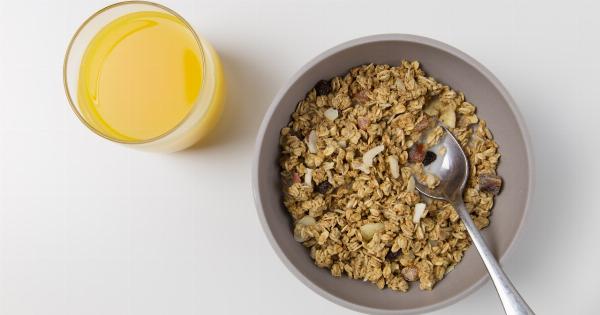Living with diabetes can be challenging, but with the right knowledge and strategies, you can manage your condition effectively. One crucial aspect of diabetes management is understanding the role of food in controlling blood sugar levels.
Reading and interpreting food labels correctly is a key skill that can empower you to make informed choices about your diet. In this article, we will delve into the world of food labels and provide you with essential information to help you navigate the grocery store aisles with confidence.
1. Serving Size and Servings Per Container
One of the first things you’ll find on a food label is the specified serving size. This information allows you to gauge the amount of food you should consume in relation to its nutritional values.
Pay attention to the servings per container as well, as some packages may contain multiple servings.
2. Total Carbohydrates
Carbohydrates have a direct impact on blood sugar levels, so understanding the total carbohydrates in a particular food item is essential for managing diabetes.
Look for this information on the label and consider the portion size you’ll be consuming.
3. Dietary Fiber
Dietary fiber plays a crucial role in maintaining stable blood sugar levels. It slows down the absorption of carbohydrates, preventing sudden spikes in your blood sugar.
Aim for foods that are high in dietary fiber, as they can help you manage your diabetes effectively.
4. Sugars
Sugar can be hidden in many forms, so it’s important to keep an eye out for various sources of added sugars. Look for words such as sucrose, glucose, fructose, corn syrup, and other sweeteners in the ingredient list.
Minimizing your sugar intake can help you maintain better control over your blood sugar levels.
5. Fat Content
While carbohydrates have a more significant impact on blood sugar levels, it’s still important to pay attention to the fat content of the food you consume.
Opt for low-fat or reduced-fat options whenever possible, as consuming excess fat can lead to weight gain, which can further complicate diabetes management.
6. Sodium Content
Sodium, also known as salt, is another crucial factor to consider, especially if you have high blood pressure along with diabetes.
Excessive sodium intake can lead to elevated blood pressure levels and potentially contribute to various health complications. Monitoring your sodium intake is important for overall well-being.
7. Vitamins and Minerals
Food labels often include information about the vitamins and minerals present in a particular food item.
While these may not directly impact your blood sugar levels, they play vital roles in overall health and can support your diabetes management efforts. Pay attention to the nutrients that are important for individuals with diabetes, such as vitamin D and magnesium.
8. Ingredients List
The ingredients list provides valuable information about what exactly is in the food item. Pay close attention to this section, especially for hidden sources of added sugars, unhealthy fats, and other potentially harmful additives.
Familiarize yourself with the different names for these components to make informed decisions while shopping for food.
9. Sugar Alcohols and Artificial Sweeteners
Sugar alcohols and artificial sweeteners are commonly used as alternatives to sugar for individuals with diabetes. They provide sweetness without spiking blood sugar levels significantly.
However, it’s important to note that consuming excessive amounts of sugar alcohols can have a laxative effect. Be mindful of the amounts you consume and their impact on your digestion.
10. Allergen Information
If you have allergies or sensitivities to certain ingredients, the allergen information on food labels is crucial. Look out for common allergens like nuts, gluten, or lactose if they pose a risk to your health.
Stay diligent while reading food labels to make sure you’re not unintentionally consuming something that could trigger an allergic reaction.
Conclusion
Understanding food labels is an essential skill for anyone managing diabetes.
By paying attention to serving sizes, total carbohydrates, dietary fiber, sugars, fat content, sodium levels, vitamins and minerals, ingredients lists, sugar alcohols and artificial sweeteners, and allergen information, you can make informed decisions about your diet. Regularly checking food labels and being aware of what you’re consuming allows you to maintain stable blood sugar levels and improve your overall health.




























